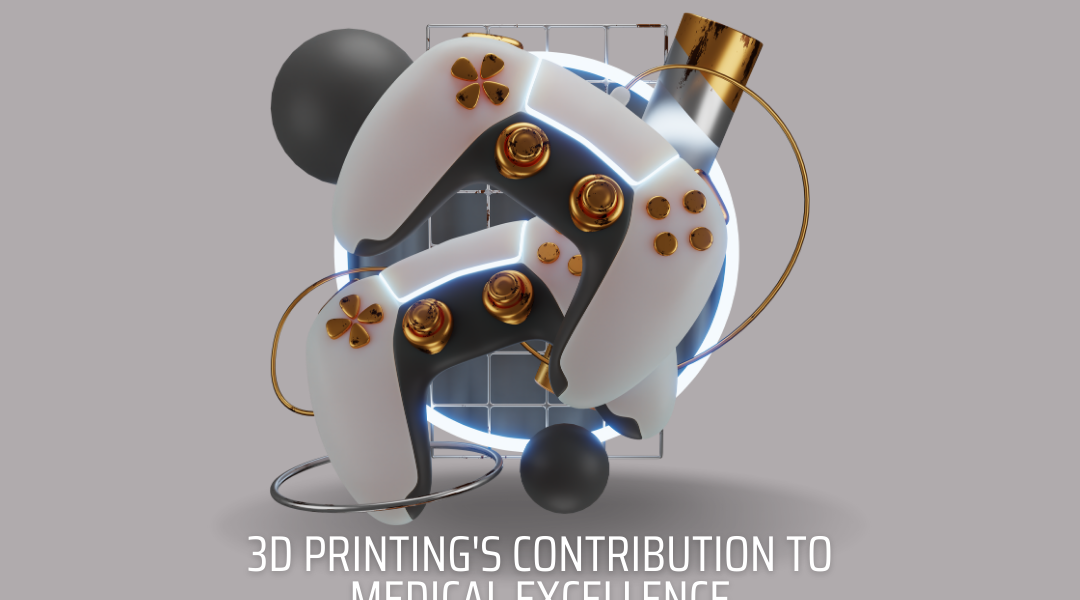Introduction: The marriage of 3D printing and healthcare has given rise to a new era of medical excellence. This transformative technology is redefining the healthcare landscape, enhancing patient care, and revolutionizing medical procedures. In this article, we will delve into the significant contribution of 3D printing to the pursuit of medical excellence, showcasing its diverse applications and potential to redefine the future of healthcare.
- Personalized Medical Solutions: 3D printing has ushered in an era of personalized medicine, allowing healthcare professionals to create tailored solutions for individual patients. From customized prosthetics to patient-specific implants and medical devices, 3D printing ensures that treatments are precisely matched to each patient’s unique anatomy. This personalization enhances patient comfort and leads to improved treatment outcomes.
- Precision in Surgical Planning: Surgical precision has reached new heights with the aid of 3D printing technology. Surgeons now have access to highly accurate, patient-specific 3D models of anatomical structures, enabling meticulous surgical planning and practice. This level of precision reduces the risk of complications, shortens recovery times, and enhances patient safety.
- Advanced Medical Education: Medical education has undergone a profound transformation with the integration of 3D printing. Medical schools and training programs can create lifelike anatomical models that replicate human organs and structures with exceptional accuracy. This hands-on approach equips medical students and professionals with the skills and knowledge necessary to excel in their practice.
- Accelerated Research and Development: The rapid prototyping capabilities of 3D printing have revolutionized research and development in healthcare. Researchers can swiftly create and test medical devices, pharmaceuticals, and treatment methods. This agility is particularly crucial in addressing emerging health challenges and pandemics, where rapid innovation can make a significant difference.
- Dental Precision: The dental field has embraced 3D printing, leading to remarkable advancements in precision and patient care. Dentists can create highly accurate dental implants, crowns, and orthodontic devices that are custom-fitted to each patient’s oral anatomy. This precision not only improves dental outcomes but also enhances the overall patient experience.
- Biofabrication and Organ Printing: The future of 3D printing in medicine holds the promise of biofabrication and organ printing. Researchers are actively working on creating functional human tissues and organs through 3D printing. While this field is still in its infancy, it offers hope for addressing organ shortages and revolutionizing transplantation procedures.
- Cost-Effective Solutions: 3D printing has the potential to reduce healthcare costs by minimizing the need for costly revisions and replacements. Customized medical solutions are often more cost-effective in the long run. Moreover, 3D printing’s adaptability and accessibility make it a valuable tool for providing medical solutions in remote and underserved areas, improving healthcare access.
- Telemedicine Integration: The integration of 3D printing with telemedicine has further expanded its potential to contribute to medical excellence. Telemedicine has become increasingly important, especially in remote and underserved areas. Combining 3D printing with telemedicine allows doctors to remotely assess patients and design custom medical solutions. This synergy ensures that patients receive personalized, high-quality care regardless of their geographical location, bridging healthcare disparities.
- Ethical and Regulatory Considerations: As 3D printing continues to advance in healthcare, addressing ethical and regulatory considerations is essential. Ensuring the safety, quality, and ethical use of 3D-printed medical products is crucial for maintaining trust in the healthcare system. Regulatory bodies and healthcare institutions must continue to develop and refine standards to keep pace with the rapidly evolving technology.
- Expanding Possibilities: The future of 3D printing in medicine holds tremendous promise. Researchers are exploring innovative applications, such as printing complex vascular networks within tissues and developing biocompatible materials for advanced medical solutions. These developments offer hope for addressing some of the most challenging medical conditions and providing new avenues for treatment.

